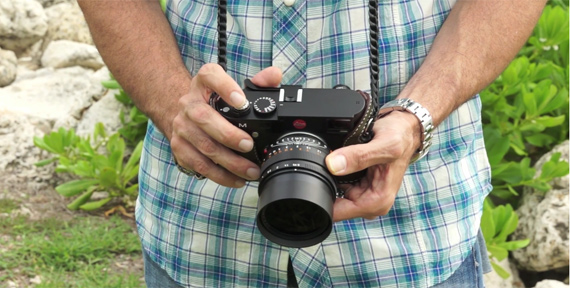When it comes to photography, the word “bracketing” can mean a lot of things. Essentially, it just refers to the practice of taking the same shot several times using different camera options, but it can be done in so many ways. By making so many different images of the same scene, you can then choose the most successful, or in some cases, blend them all together; this is how HDR photography is done. Bracketing your aperture —taking the same shot at f/4, f/5.6, and f/8, for example—gives varying depths of field, while bracketing your shutter speed produces different degrees of motion blur. Bracketing your overall exposure value creates both underexposed and overexposed photos. In this video, though, photographer Scott Morvay teaches us about focus bracketing:
He describes two distinct methods that have the same result: “body rocking” and “safe cracking.” The idea behind both is altering your focus ever so slightly, either through the lens or through your body’s position. This is a very useful technique when shooting large-aperture lenses wide open. With such a shallow depth of field, it becomes almost impossible to get your focus spot on, particularly in the low-light conditions. Focus bracketing may give you more pictures to sort through, but it can seriously alleviate the pain of missing the focus on an otherwise perfect shot.
Both the body-rocking and safe-cracking methods require you to use manual focus. He also suggests being in continuous drive shooting mode for fluid operation. To bracket your focus, simply do the following:
- Frame and focus on your subject.
- Take your first shot.
- Either:
a) Lean back and shoot. Straighten up, shoot. Lean forward, shoot, or
b) Turn your focus knob a little to the right, shoot. Turn it back to the middle, shoot. A little to the left, shoot. - Repeat.
- Back at your computer, you can view each shot side-by-side and choose which of them has the best focus.
Voila! You’ve just tripled your chances of a perfect photo.
Like This Article?
Don't Miss The Next One!
Join over 100,000 photographers of all experience levels who receive our free photography tips and articles to stay current:







This sounds useful where you can’t see well enough to MF accurately. Pump the ISO, take a bunch of shots and hope something is good
Consider focus stacking if it is possible
I see Scotts point, especially shooting wide open, thinking that I had taken time to focus properly only to be disappointed with the results. Scotts x2 methods, body-rocking and safe-cracking now make sense to me. Sure you end up taking more photos, but shooting digital, thats a bonus.
Now to put it into practice.
What ever happened to taking the time to get it right the first time.